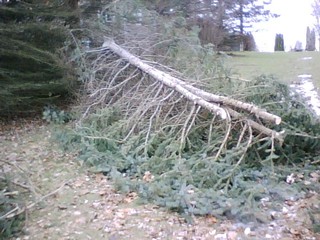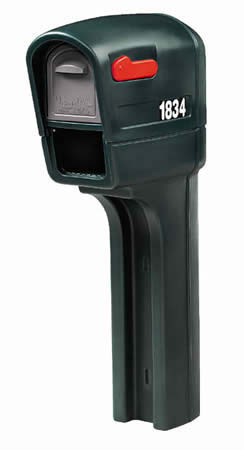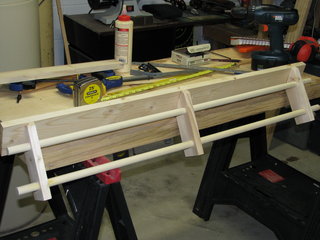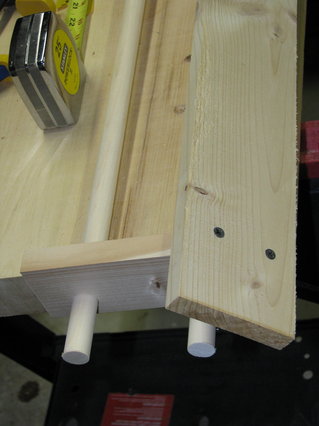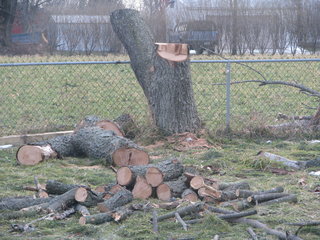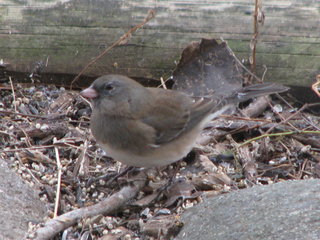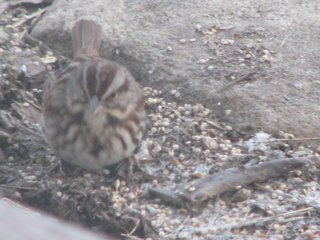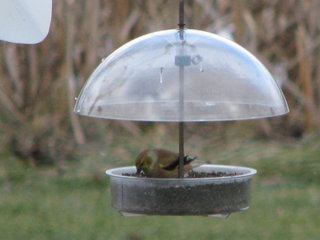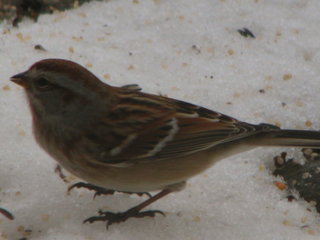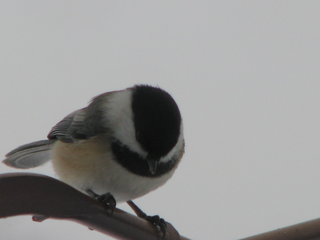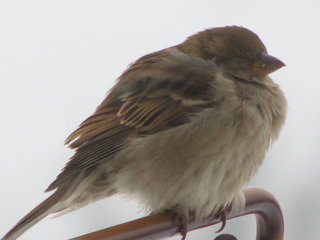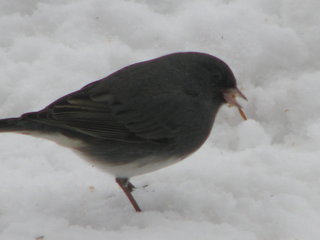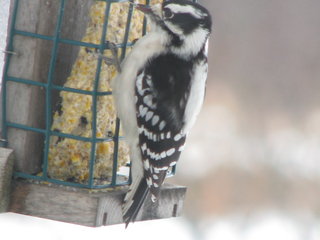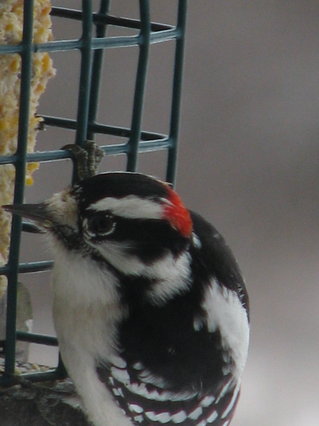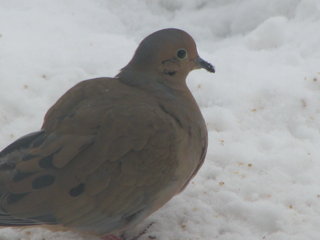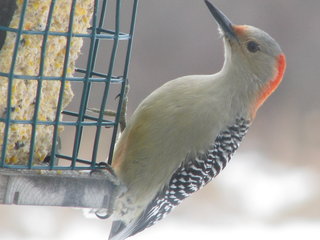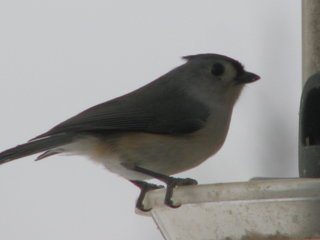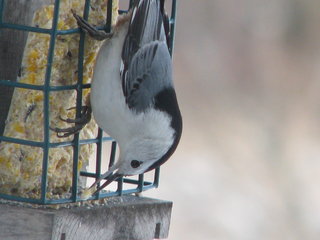As previously recounted, Nicole & I returned from our holiday trip to find (1) not-nearly all of our mail and (2) a tree partially-blocking the driveway. I took some pictures. Please remember that these were taken at night, with a phone-camera, and inexpertly "photoshopped" in iPhoto.
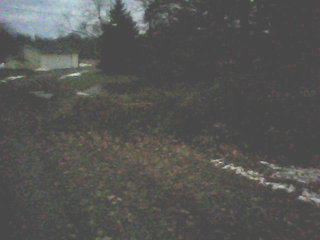
The fallen object is actually just the upper-half of a 40' fir. This image shows where it broke-off the trunk. The tree was about as tall as it's neighbor to the left. Had the entire tree come-down, it might have struck the power-lines on the opposite of the driveway. That would have been bad. It would have interrupted electrical service to the house, leaving us without a sump-pump in the middle of a bunch of melting snow.
Yesterday afternoon, Nicole & I took care of the downed treetop. IANAL(umberjack), but I have been friends with one or two, helped Dad with the winter's firewood more than once, and read this book when I bought my first chainsaw. Believe it or not, this is probably the most dangerous thing I've done with a chainsaw (not that I've done much, you understand). The bottom-end of the trunk is above my head and dangerous to cut. The top-end spilt into 3 trunks, so the weight is uneven and more prone to roll. There are many springy pine-boughs compressed under the trunk. Cut the wrong thing and the tree moves, maybe rolling onto you or driving a branch, the saw, etc. into you. In this picture, you can see how I cut the limbs off the upper side, then lop-off the three tops. That removed a lot of weight. Then, starting at the top, I tested each branch on the sides, and cut them if they weren't under compression. That left me with the tree balanced, accessible, and lighter. After that, I carefully cut firewood-sized segments from the trunks until I thought the tree light enough to pull forward (out of its neighbor's branches) and roll onto the branchless surface. After that, it was a simple matter of limbing the remnant and cutting it into firewood.
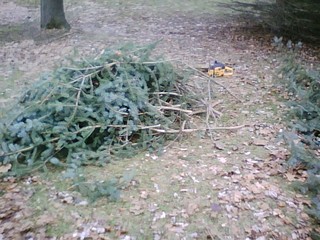

You can, vaguely, see the tree lying right-edge to almost left-edge, with the top of the tree in the driveway. It doesn't help that most of the autumn maple-tree leaves in the area were blown against the downed tree. With the mud from the newly-melted snow, everything is more-or-less a uniform reddish-brown.
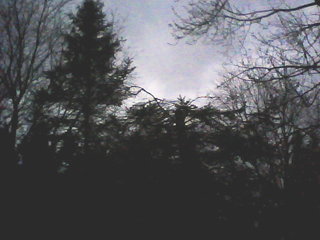

The fallen object is actually just the upper-half of a 40' fir. This image shows where it broke-off the trunk. The tree was about as tall as it's neighbor to the left. Had the entire tree come-down, it might have struck the power-lines on the opposite of the driveway. That would have been bad. It would have interrupted electrical service to the house, leaving us without a sump-pump in the middle of a bunch of melting snow.
Yesterday afternoon, Nicole & I took care of the downed treetop. IANAL(umberjack), but I have been friends with one or two, helped Dad with the winter's firewood more than once, and read this book when I bought my first chainsaw. Believe it or not, this is probably the most dangerous thing I've done with a chainsaw (not that I've done much, you understand). The bottom-end of the trunk is above my head and dangerous to cut. The top-end spilt into 3 trunks, so the weight is uneven and more prone to roll. There are many springy pine-boughs compressed under the trunk. Cut the wrong thing and the tree moves, maybe rolling onto you or driving a branch, the saw, etc. into you. In this picture, you can see how I cut the limbs off the upper side, then lop-off the three tops. That removed a lot of weight. Then, starting at the top, I tested each branch on the sides, and cut them if they weren't under compression. That left me with the tree balanced, accessible, and lighter. After that, I carefully cut firewood-sized segments from the trunks until I thought the tree light enough to pull forward (out of its neighbor's branches) and roll onto the branchless surface. After that, it was a simple matter of limbing the remnant and cutting it into firewood.

The brushpile on the left is about 1/3 of the total. You can see the chainsaw in the background, to give an idea of the size of the pile. I joked that we should be careful removing things from pile of pine boughs -- Les Stroud might be sleeping under them. Nicole got the crappy job -- moving the 2-6' boughs to someplace else. Trashed a pair of gloves with the sap. Most of the cuttings she added to an existing brushpile. I took some of it to the far-end of the property and dumped it there. Should keep the bunnies & such warmer.

